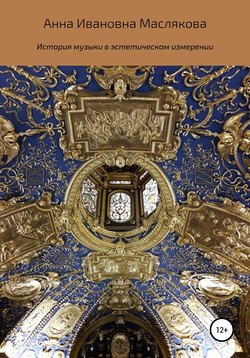Читать книгу История музыки в эстетическом измерении - Анна Ивановна Маслякова - Страница 3
Introduction
ОглавлениеSince the so-called ‘aesthetic dimension’ occurs in the title of the book, which you are holding, it is necessary to give an explanation of this term. The category of ‘musical-and-aesthetic’ is the backbone of our research and by using it we would like to emphasize how various ideas can be conveyed in musical sounds.
As a matter of fact, a lot of scientists paid attention to this problem trying to find out the essence of the main aesthetic categories (‘beautiful’ and ‘ugly’, ‘sublime’ and ‘low’, ‘tragic’ and ‘comic’) and the way of their expression in music. However, the system solution to this issue still has not been found.
In this book, the idea of which appeared in the middle of writing our previous monograph where the connection between music and philosophical thoughts of Alexander Scriabin was studied, we make an attempt to fill up the gap. We are going to scrutinize the six-part musical-and-aesthetic fugue, the ‘voices’ of which are the main aesthetic categories, on the scale of the whole history of music.
Having read a wide range of scientific literature on this topic we suggest studying the dynamics of evolution of ‘musical-and-aesthetic’ on three levels:
creativity of composers;
main epochs (Antiquity, Middle Ages, Renaissance, etc.);
major historic periods (the first stage – Antiquity and Middle Ages, the second stage – from the 14-16 centuries till the 17-18 centuries, the third stage – from the end of the 18 century till present days).
Besides, in our research ‘vertical comparison’ (musical-and-aesthetic concepts of different epochs) is complemented by ‘horizontal slice’ of cultural heritage. In other words, we are going to explore the specifics of changing of ‘musical-and-aesthetic’ in the context of the other branches of Art (painting, sculpture, architecture, theater).
On the whole, we believe that the history of music reconstructed in ‘aesthetic dimension’ in the unity with the other branches of Art will be beneficial или helpful not only to musicologists, but also to performers and music teachers. The method of analysis of music through the prism of philosophical ideas of the time creates prerequisites for the subsequent development of musical-and-aesthetic trend in musicology.
The author expresses his thanks to everyone for their help and support.
